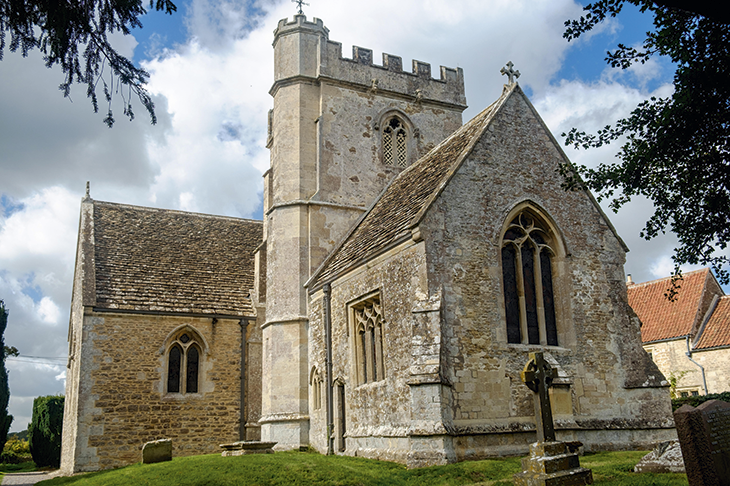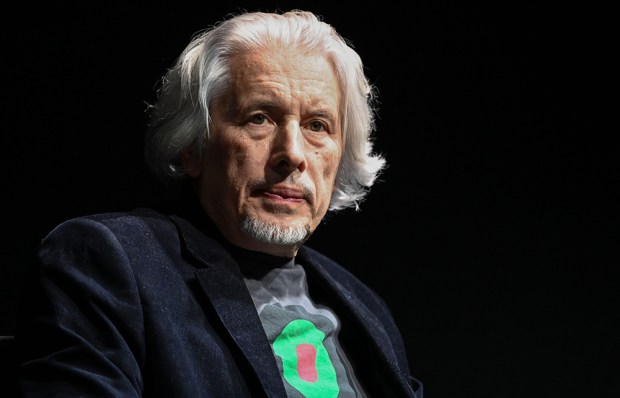Andrew Ziminski is the man who rebuilt the West Country. For 30 years, this skilled stonemason has renovated some of Britain’s greatest buildings. Along the way, he has acquired an unparalleled understanding of this country’s stones.
He got hooked as a young man when a mason asked him if he noticed that tea tasted different in different parts of the country. That was because the land’s personality had an effect on its water; and so it is with stones. It’s oolitic limestone that gives Bath its golden tint. It’s granite that gives Aberdeen its mighty, hard-as-rock profile — fizzing, incidentally, with a batsqueak of radiation.
Until the 18th century and the arrival of canals and, later, trains, buildings were largely made of the stone beneath them — except in places without building stone nearby, such as Westminster Abbey. That’s where Ziminski served his apprenticeship 30 years ago, working on the Caen stone imported at huge expense from Normandy.
But his home patch, the West Country, is rich in slate, granite, sandstone and the greatest building stone of all, oolitic limestone, formed by a billion ancient sea creatures and, joy of joys for a stonemason, cuttable in any direction. The author skilfully explains the history of these stones and — this is what makes his book so entertaining — relates them to jobs he has done.
And what jobs! He worked on West Kennet Long Barrow, dating from 3,650 BC. This is built out of sarsen stones and thinly split forest marble — a flat limestone, carried over 25 miles from Somerset’s Mendip hills. In a job which I’m sure is much more complicated than it sounds, Andrew and his business partner Andy just use their hands to put back the barrow’s fallen stones, sticking them in place with chalky mud — the oldest of all building materials — and a backing mortar.
Ziminski is so in love with the sarsen stones of the West Country that he drags one home to his workshop, covering himself with dust as he bangs away at his impossibly hard, quartzite slab. Just as Michelangelo did with the stone for the ‘Pietà’, he checks for premature fracturing by striking it all over with the end of a chisel. Satisfied that the stone rings true, he gets down to work.
Only a master craftsman like him can spot the marks that ancient stone-masons leave behind. At one point, in a field near West Kennet Long Barrow, he spots a ‘polissoir’ — a 5,000-year-old axe-grinding stone bench, scored with a series of grooves where prehistoric polishers sharpened their axes. Ziminski is one of those lucky souls with rural X-ray spectacles. He looks at the countryside and sees a series of historical slides going back over several millennia.
When he moves on to Stonehenge, he doesn’t give us yet another crackpot theory as to the reason for its construction. He deals in hard facts, hewn out of cold rock. So I believe him when he says that Stonehenge is ‘the high point of European cultural prehistory, the only circle where the stones are shaped and jointed one to another’.
From Stonehenge, he moves on to a heart-in-mouth job at sublime Salisbury Cathedral, replacing stone panels near its peak, just below the corner pinnacles around the spire. Those panels are made out of silage-green Chilmark stone. That ‘silage-green’ is typical. Ziminski has a wonderful way of describing the look and feel of stone. He remembers discovering, aged 12, a flint axehead which had absorbed background minerals from the earth so that its surface turned from ‘marbled blue-white to toffee gold’.
He crisscrosses the West Country like a masonry paramedic, patching up its finest buildings. At Fittleton in Wiltshire, he rebuilds the spire of the parish church struck by a lightning bolt ‘that tore it open like a peeled banana’. In Bath, he works on the last remaining column and capital of the Roman temple of Sulis Minerva, dating to 90 AD. At the exceptional Anglo-Saxon church of St Laurence, Bradford-on-Avon, he rejigs a stone that had slipped out of the north porticus, and holds it in place with the same oily clay from the River Avon that had been used 1,000 years before.
He ventures into Wales, beneath the ramparts of Carreg Cennen Castle, to stock up on Pennant sandstone in a neighbouring quarry. He then uses that sandstone to rebuild the crenellations of the walls of Wells Cathedral. What a magician!
Ziminski also has the best book acknowledgement I’ve ever read: ‘Sorry, Michael, that I caused the loss of your index finger on the circular saw.’/>
Got something to add? Join the discussion and comment below.
Get 10 issues for just $10
Subscribe to The Spectator Australia today for the next 10 magazine issues, plus full online access, for just $10.
You might disagree with half of it, but you’ll enjoy reading all of it. Try your first month for free, then just $2 a week for the remainder of your first year.














Comments
Don't miss out
Join the conversation with other Spectator Australia readers. Subscribe to leave a comment.
SUBSCRIBEAlready a subscriber? Log in